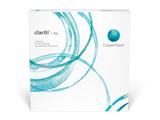
One minute, you’re enjoying a leisurely day at the beach, then suddenly a gust of wind picks up and your eyes start hurting and watering uncontrollably. You’ve gotten sand in your eyes. It’s uncomfortable and can potentially hurt the eyes’ delicate tissues. Read on to learn what happens when you get sand in your eyes and what you should do to get it out without damage.
What to do?
As soon as you feel sand get in your eye, flush the eye with saline if available or water. Remove your contact lenses if possible. Do not rub the eye as this can cause damage. Also, do not try to remove the sand yourself using your fingers or tools as you will likely cause an abrasion and increase the risk of infection.
What if problems persist?
Even though your eyes will try to flush the sand out by watering heavily and you may try to irrigate the eye, scratches can still occur. When this happens, it is called a corneal abrasion. The cornea is the clear tissue that protects the pupil and iris and helps your eyes focus.
The following symptoms are a sign of corneal abrasion:
-
Eye pain, especially when opening and closing eyelid
-
Feeling of a foreign particle in the eye
-
Light sensitivity
-
Blurred vision
-
Redness
-
Excessive tearing
How to treat a corneal abrasion?
If you suspect an abrasion, get to your eye doctor as soon as possible. He or she will inspect your corneas and eyelids under bright lights and magnification, then will put a dye in the eye that will reveal any scratches. Your doctor will likely treat you with topical antibiotic drops to prevent infection and/or give you medication for pain and inflammation.
While getting sand in the eye is no beach picnic, it rarely causes permanent eye damage and most people recover from minor scratches to the cornea in one to three days. However, it is important to be cautious as deeper scratches caused by eye rubbing can cause long-term problems. The best cure is always prevention and a good pair of shades on a windy day at the beach can be all you need to keep the sand out.





